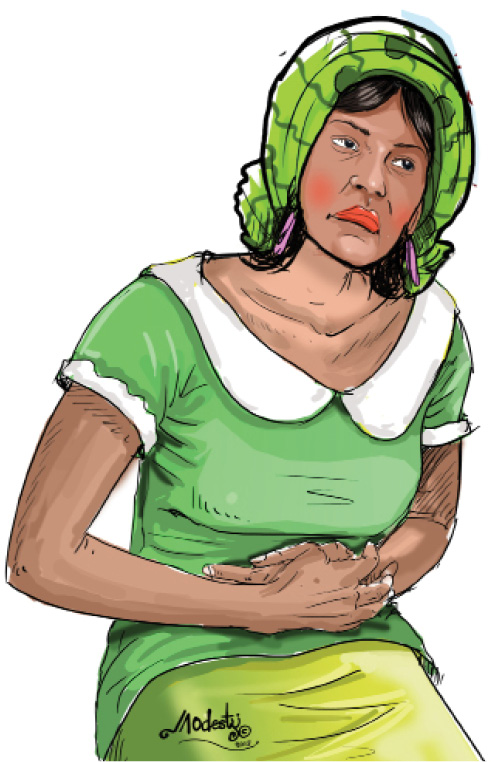I am a 21 year-old lady. Kindly enlighten me on menstrual cramps. Some of my friends and I experience it and we need to know more about it.
Zikki V.
Menstrual cramps are painful sensations that affect many women before and during a menstrual period. The pain, also known as dysmenorrhoea or period pains, ranges from dull and annoying to severe and extreme.
Menstrual cramps tend to begin after ovulation (when an egg is released from the ovaries and travels down the fallopian tube). Pain occurs in the lower abdomen and lower back. It usually begins one to two days before menstruation and lasts from two to four days. Pain that is only associated with the process of menstruation is known as primary dysmenorrhoea.
If the cramping pain is due to an identifiable medical problem such as endometriosis, uterine fibroids or Pelvic Inflammatory Disease (PID), it is called secondary dysmenorrhoea. The pain can range from slight to severe. Emotional stress can increase the chances of experiencing menstrual cramps.
Symptoms
Menstrual cramps are sharp pains in the abdomen before and during menstruation.
Menstrual cramps usually refer to a dull, throbbing and cramping pain in the lower abdomen; just above the pelvic bone.
Other symptoms may include:
- Pain in the lower back and thighs
- Nausea and vomiting
- Sweating
- Faintness and dizziness
- Diarrhoea or loose stool
- Constipation
- Bloating
- Headache
If symptoms persist, it is a good idea to see a doctor.
Causes
Approximately once every 28 days, if there is no sperm to fertilise the egg, the uterus contracts to expel its lining. Hormone-like substances called prostaglandins trigger this process. Prostaglandins are chemicals that form in the lining of the uterus during menstruation.
They cause muscle contractions and cramps that are similar to labour pains. They can also contribute to nausea and diarrhoea. The contractions inhibit blood flow to the lining of the uterus or endometrium.
Risk factors
Those who are more likely to experience menstrual pains include:
- Being younger than 20 years
- Starting puberty at 11 years or younger
- Menorrhagia or heavy bleeding during periods
- Never having given birth
Conditions that can worsen menstrual cramps
- Endometriosis: The tissue that lines the uterus develops outside the uterus.
- Uterine fibroids: Non-cancerous tumours and growths in the wall of the uterus.
- Adenomyosis: The tissue that lines the uterus grows into the muscular walls of the uterus.
- Pelvic Inflammatory Disease (PID).
- A sexually transmitted infection caused by a bacterium.
- Cervical stenosis: The opening of the cervix is small and limits menstrual flow.
Treatment options
- An intrauterine contraceptive device (IUD) can help to reduce the symptoms of menstrual cramps.
- Over-the-counter medication is available to treat most cases of menstrual cramps.
- Anti-prostaglandins reduce cramping in the uterus, lighten the flow of blood and relieve discomfort.
- These medications may also contain pain killers. These are types of non-steroidal anti-inflammatory drugs (NSAIDs).
- NSAIDs are also used alone to reduce menstrual cramp pain.
- In some cases, birth control pills can be used continuously, without the four to seven days break each month that is normally adhered to. There will be no bleeding at all in this case.
- Other types of birth control, including some types of hormonal IUD, vaginal rings, patches and injections can all help decrease cramping.
- If the cramps are due to an underlying medical condition such as endometriosis or fibroids, surgery may be needed to remove the abnormal tissue.
Preventive measures
Measures that may reduce the risk of menstrual cramps include:
- Eating fruits and vegetables and limiting intake of fat, alcohol, caffeine, salt and sweets.
- Exercising regularly.
- Reducing stress.
- A hot bath can be a non-medical remedy for menstrual cramps.
- Getting enough rest and sleep and regular exercise may help.




